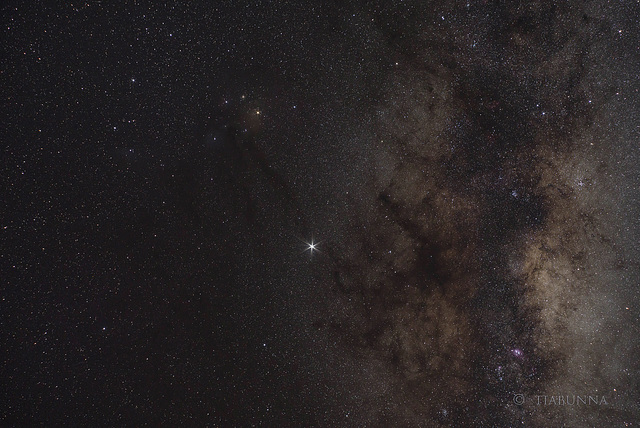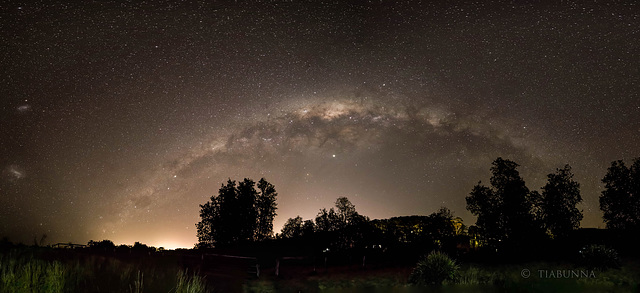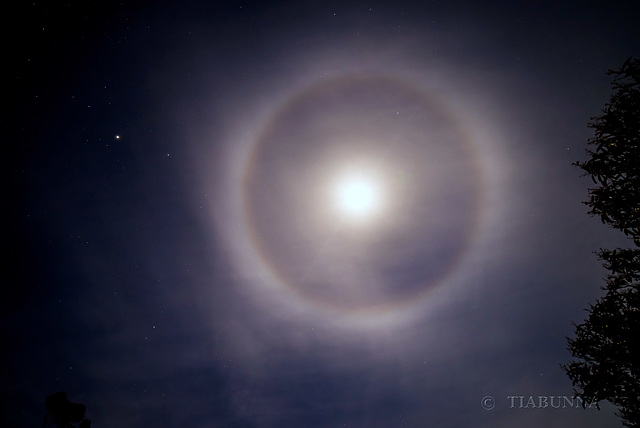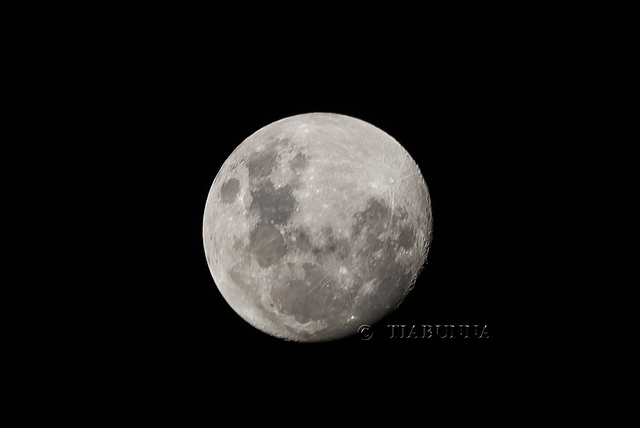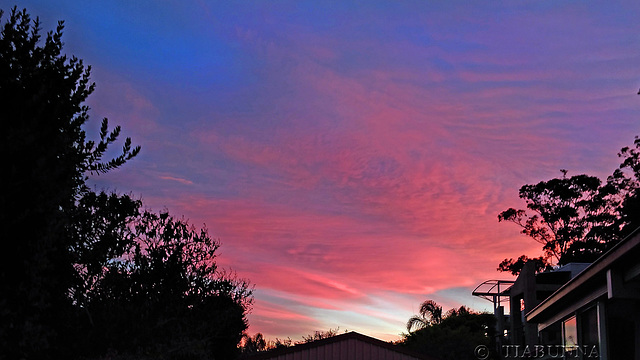
In the Sky
For all the meteorological and astronomical shots I take from time to time.
27 Jun 2019
15 favorites
9 comments
Scorpio and Jupiter
I was very impressed the other night by the clear overhead view of Scorpio and Jupiter (see notes for details). Best viewed large on black.
01 Oct 2019
52 favorites
38 comments
The Bow to the west
Stitched image (8 shots) of the Milky Way Bow, looking west and covering from south to north. Somewhat more light pollution than I'd like (and a few local lights). See notes, then view large.
01 Sep 2020
31 favorites
46 comments
Lunar halo
I was very impressed to see this great lunar halo last night, formed by a layer of icy high level cirrostratus cloud. On the left are Jupiter and Saturn, sitting just below Sagittarius (see PiPs). Best viewed large on black.
Cropped section of sky with Comet Swan.
A cropped section from my wider sky image of Comet "C/2020 F8 SWAN" and even this crop is best viewed large. The full wider image is shown in the PiP - you'll be hard pressed to find the comet in it! More details about this comet with my main wider sky image.
17 Dec 2020
36 favorites
24 comments
Evening conjunction
So good that the uploader is again working! I had to try it, though I've had fairly few opportunities for taking photos lately and I'll largely be going back to reposting file material.
This was a new image though, of the much publicised conjunction between Jupiter (way down at the foot) and Saturn to its right. Down here in the Southern Hemisphere where it's summer, it wasn't near dark until they were slipping below the horizon - as seen here. Although this was taken on 17 December and the closest point wasn't until 21 December (when we had clouds and rain), it does seem to me that the "meeting" was somewhat over-sold! Best viewed large.
22 Jul 2021
21 favorites
15 comments
Near full
To my surprise, the clouds cleared enough for me to grab this image of the near-full moon. Photo taken hand-held and cropped.
09 Sep 2021
33 favorites
23 comments
Unexpected sunset
Here's the sunset that I didn't expect when I took the previous image of the bridgeworks. I don't believe I caught it at its best, but it certainly was impressive.
Comet Leonard
After nights of rain and cloud, finally we had a look at Comet Leonard. I must admit it was a little disappointing, as even with binoculars it proved hard to find - it certainly was not a naked eye comet. As a bonus though, there are a couple of satellites to the left of the image if you view large.
Nacreous Clouds
Copied from an old 1966 slide. Previously posted some years ago, now with a better quality image. View large on black.
The Bureau of Meteorology had asked us to look for these colourful thin clouds and, in August, we were surprised and delighted to see them behind the meteorological office. They are Nacreous Clouds, also known as "Mother of Pearl" clouds because of their colours or, more currently, as "Polar Stratospheric Clouds". They are made of ice crystals (which give their colour), are about 20-25 km high, and form when temperatures there drop below -80 C. They had always been considered quite rare and I believe our sighting was one of the earliest confirmed at Mawson in Antarctica. There have been very numerous sightings since, significantly becoming as late as October, because of climate change effects.
Ozone normally forms in the early spring in the polar stratosphere and absorbs ultraviolet radiation as the sun returns, in the process warming the stratosphere. In the 1970s it was found that Chlorofluorocarbon gases (once used in spray cans and old refrigerators) mix through the atmosphere and break up the newly formed ozone, causing the polar stratosphere to remain colder in spring. This is the "ozone hole". Although chlorofluorocarbon gas use has (largely) been banned, it will take years for the gases already released to break down, for the ozone hole to heal totally, and for the stratosphere to return to normal. Yes, this is relevant to climate change: see this link.
Jump to top
RSS feed- Latest items - Subscribe to the latest items added to this album
- ipernity © 2007-2024
- Help & Contact
|
Club news
|
About ipernity
|
History |
ipernity Club & Prices |
Guide of good conduct
Donate | Group guidelines | Privacy policy | Terms of use | Statutes | In memoria -
Facebook
Twitter

